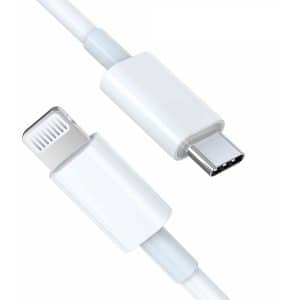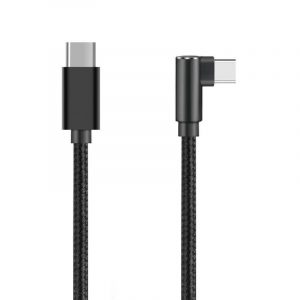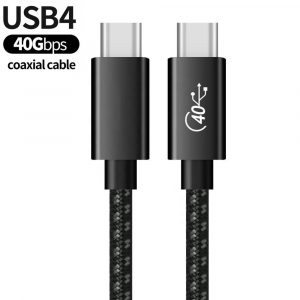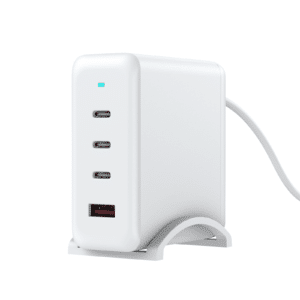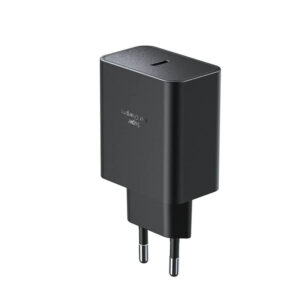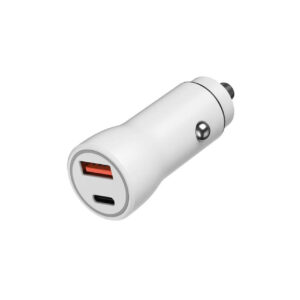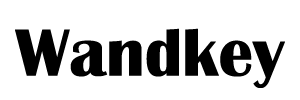I keep seeing the same question from friends and clients: what cable will the iPhone 17 charging cable, and which one should I get?
Here is my short answer: I plan to use a USB-C to USB-C cable that meets USB Power Delivery. Apple is expected to reveal iPhone 17 around September 9, and it should keep USB-C. I do not expect charge power beyond 45 W for the phone itself.
I know you want more than a yes/no. Below I explain cable types, wireless options, data speeds, charger pairing, and how I choose a durable cable that lasts.
What type of charging cable does the new iPhone 17 use?
I have tested many cables and chargers across iPhone generations, and I value simple, safe, and fast choices.
My direct take: I will use a USB-C to USB-C cable that supports USB Power Delivery. That is the standard for Apple’s recent phones iPhone 15/16. A 1–2 m cable is practical. I avoid unknown “fast” labels without real specs.

Why USB-C matters
USB-C is the universal connector. It is reversible, sturdy, and now part of Apple’s phone lineup. A USB-C to USB-C cable lets the phone and charger “talk” using USB Power Delivery (PD). PD sets the voltage and current in a safe way. It prevents damage and it improves speed.
Cable versions vs real-world iPhone needs
Many stores push terms like “USB 2.0,” “USB 3.2,” or “Thunderbolt.” These affect data rate more than charge power. For charging alone, a quality USB-C cable with 3 A current support is enough for up to 60 W. The iPhone 17 should draw far less than that, so 3 A is fine.
Quick comparison
| Cable type | Max common data rate | Power capability (typical) |
| USB-C (USB 2.0) | 480 Mbps | 60W/100W/240W available |
| USB-C (USB 3.x) | 5–20 Gbps | 60W/100W/240W available |
| USB4 | 20-40Gbps | 100W/240W available |
| Thunderbolt 4/5 cable | 40–80 Gbps | 100W/240W available |
In short, I pick a well-made USB-C to USB-C PD cable. I do not pay extra for Thunderbolt just to charge a phone. If I also need fast data and the phone supports it, I step up to a USB-C 3.x cable.
Is the iPhone 17 compatible with wireless charging pads?
Free up your workspace with a wireless charging pad. Just drop and go for effortless charging on a minimalist desk.
My view: I expect iPhone 17 to support modern Qi-based magnetic charging pads and standard Qi pads. Wireless is convenient, but wired PD is still faster and better for long-term battery care when I need a quick top-up.

Wired vs wireless: what I notice day-to-day
Speed: Wired PD is still faster. When I need power fast, I plug in.
Heat: Wireless can run warmer. I keep the pad in a cool, open spot and remove thick cases.
Use case: At my desk or nightstand, I like wireless. When traveling, I go wired.
What to look for in a pad
Qi2 or MagSafe-style alignment: It centers the coils and reduces waste.
Metal and magnets: Avoid cheap pads with weak magnets or thin coils.
Charger input: Many pads need a 30 W USB-C PD wall charger to deliver full pad output(25w Magsafe Charger).
My quick pairings table
| Scenario | What I use | Why |
| Desk all-day top-ups | Magnetic Qi-class pad + 30 W PD wall charger | Clean, steady trickle |
| Nightstand slow charge | Low-power pad with sleep-friendly LED | Less heat, soft light |
| Travel | USB-C cable + 30–35 W PD charger | Faster, lighter, universal |
| Emergency fast | Direct USB-C cable | Best speed, |
Wireless is great for convenience. For battery health and speed, I still rely on a good USB-C cable most of the time.
Does the iPhone 17 charging cable support fast data transfer?
I shoot a lot of video, so I care about moving files fast when I edit.
My plan: I will keep two cables: a tough USB-C PD cable for daily charging and a certified USB-C 3.x cable for faster data when the phone supports it. A basic USB-C 2.0 cable still charges at full speed.

Charging speed and data speed are different
Charging speed depends on PD negotiation and cable current rating (2–3 A). Cable speed matters! Your data transfer speeds are determined by the data lanes in your USB cable and your device’s port. Many standard cables included with phones only support USB 2.0 (480 Mbps). That is fine for charging and light file moves.
When higher data rate helps
If the phone records big ProRes or high-bit-rate videos, a USB-C 3.x cable (5–10 Gbps) can save time. Not all models expose high-speed data. If Apple repeats past patterns, top models may support higher data rates, while base models may stick to USB 2.0 speeds.
Simple decision map
| Need | Cable I pick | Notes |
| Daily charge, light sync | USB-C 2.0 PD cable | Cheap, tough, full charge speed |
| Large video/photo offloads | USB-C 3.x PD cable | Check device spec for 5–10 Gbps |
| Docking to displays/hubs | USB-C 3.x or Thunderbolt | Overkill for charging alone |
I keep the faster cable in my laptop sleeve. I do not waste it on bedside duty where it bends more.
Can I use an iPad or MacBook charger for my iPhone 17?
I own many chargers. I prefer one that powers my laptop and phone.
Yes, I do. I use a USB-C PD wall charger that is 30–45 W, and it safely charges my phone. PD handles the handshake. The phone takes only what it needs. I use quality brands and avoid no-name bricks.

Why a higher-watt charger is safe
PD is a smart protocol. The charger offers power steps. The phone selects one. A 45 W brick does not “force” 45 W into the phone. It just has more headroom for a laptop or a second device.
Practical wattage guide
| Charger wattage | Typical use | Pros | Cons |
| 20 W | Basic phone charge | Small, cheap | Slower boost |
| 30 W | Daily best pick | Great speed/size balance | None for phone use |
| 35 W (2-port) | Phone + earbuds | One brick, two devices | Slightly bigger |
| 45 W | Phone + tablet/laptop | Travel-friendly power | Larger, pricier |
I travel with one 35–45 W GaN charger and a dual-port model when I carry earbuds or a watch. I avoid old USB-A bricks and mix-and-match cables that skip PD.
How do I choose a durable iPhone 17 cable?
I hate swapping broken cables, so I look for build, not just buzzwords.
My checklist is simple: I choose a cable with strong strain relief, braided or thick TPE jacket, solid molding, clear specs, and a real warranty. I keep cable length to 1–2 m to reduce stress.

What actually makes a cable last
Strain relief: The small “collar” behind the plug should be long and flexible. Short, stiff collars fail early.
Jacket: Braided nylon jackets are tough and built to last, while thick TPE jackets are softer, more flexible, and less prone to tangles.
Molding and shells: Tight, even molding matters; loose shells wiggle and break solder joints.
Gauge and current: A decent 3 A rating suits iPhone needs. Super-thin cables may heat and wear out.
Testing claims: Bend-test numbers are helpful only if the brand stands behind them with a real warranty.
My durability scorecard
| Feature | What I look for | Why it matters |
| Strain relief | Long, flexible collar | Prevents plug-end breaks |
| Jacket | Braided or thick TPE | Resists fray and kinks |
| Connectors | Tight, solid molding | Protects solder joints |
| Current rating | 3 A (60 W) | Ample for phones |
Daily habits that add months to a cable
I do not wrap the cable tight around chargers. I avoid 90-degree bends at the plug. I pull by the head, not the wire. I keep one cable at the desk, one in the car, and one in my laptop sleeve so each has an easy life.
Conclusion
For iPhone 17, a quality USB-C to USB-C PD cable, a 30–35 W charger, and a spare high-speed cable for big files.
FAQ
Does fast charging harm the battery?
I avoid long, hot charging sessions. PD is safe, but heat is the enemy. I charge fast to 80% when in a rush and slow charge overnight.
What cable length is best?
I keep a 1-meter cable on my desk and a 2-meter one for the sofa or bed. Remember, longer cables can lead to slower charging and are more likely to get tangled.
Do I need a 240 W cable for my phone?
No. That is for high-power laptops. A 60 W-rated cable is more than enough for phones.
Is USB-A to USB-C okay?
Yes, a USB-A to USB-C cable will charge your device, but it won’t unlock the full power delivery (PD) features. For the safest and fastest charging, it’s best to use a USB-C to USB-C cable.
Should I buy bend-proof “armored” cables?
Some are great, some are hype. I still check strain relief, molding quality, and the warranty.
Related Products
Wandkey Electronic Co., Ltd – Your Trusted Partner for Premium Phone Accessories
Wandkey Electronic Co., Ltd is a leading manufacturer specializing in high-quality phone accessories, offering a full range of USB-C Cables (2.0/3.0/3.1/3.2 Gen 2/USB4), Lightning Cable, iPhone Charger cable, PD Fast Charer, GaN Wall Chargers, Car Chargers, and more. With UL, CE, RoHS, Reach, PSE, KC, FCC, UKCA certificate, ensuring top-tier quality and safety.
What We Offer
We provide OEM & ODM services to help brands and businesses customize their products, including:
✅ Custom Branding & Logo Printing – Enhance your brand presence with personalized designs.
✅ Tailored Product Specifications – Customize cable lengths, charging power, materials, and more to fit your needs.
✅ Certified and High-Quality Manufacturing – Strict quality control and compliance with international safety standards.
✅ Packaging Customization – We offer bulk packaging, retail packaging, and eco-friendly solutions.
✅ Technical Support & After-Sales Service – Professional guidance from product development to after-sales assistance.
Who We Serve
Our business model is B2B wholesale, catering to brands and manufacturers who require premium charging accessories. Our main customers include:
✔ Phone accessory brands looking for high-end charging solutions.
✔ Electronics and smart device manufacturers needing reliable charging components.
✔ Medical equipment companies, monitoring system providers, and other industries requiring certified power solutions.
Looking for a reliable supplier for premium USB cables and chargers? Contact us today to discuss your project needs and get a customized solution tailored to your brand.
Top Topics
2025 Latest MFi Authorized Manufacturers list
Differences of Lightning Connector
How to check MFI Certification
How to get MFI Certification for Your Brand?
USB C Pinout Guide and Features
Understanding USB PD 3.1 vs PD 3.0 vs PD 2.0
USB 2.0 vs 3.0 Cables: Speed, Compatibility & Buying Guide
Why does the MFI Certified Lightning Cable so expensive?
MFI Product Packaging Requirement?
Disassemble MFI Lightning Cable
How do we guarantee the quality?
How to identify counterfeit or uncertified Lightning connector accessories
How to Choose Fast Charging Cable for Your Phone
How do I choose a USB-C cable?
Differences between USB 3.0 3.1 and 3.2
Test on USB C to USB C 3.1 Cable
Test on Right Angle USB C to USB C Cable


